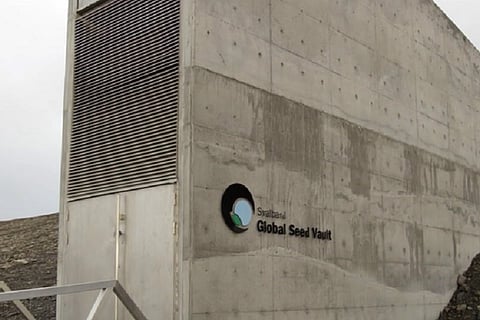

Deep inside a mountain in the Arctic lies a bank of a slightly different nature. Instead of money or other similar valuables, the structure stores and protects seeds of thousands of varieties.
Also known as the 'Doomsday Vault', the Global Seed Vault at Svalbard has over 8,50,000 seed samples with millions of seeds (around 556 million) from over 5,000 different species, which have been deposited by more than 200 countries.
Were anything to happen to key food crops in the world, say due to a natural disaster, the seed vault would then come to rescue.
Michael Koch from the Crop Trust explained to CNN that, "Agriculture is not adapting as fast as the climate is changing on us. We have to adapt to rising temperatures, to wind and storms and flooding, to new diseases and pests, we have salt water coming into the rice paddies in the fields so salination is an issue. This is the diversity of the genes you are going to use to adapt agriculture, and you do not know what you are going to need 50, 100, or 500 years from now."
The region, which is permafrost, lies between Norway and the North Pole. The seeds are stored in dry rock vaults at -18 degrees C. And even if there is a power outage, the seeds can still be stored without any harm as the temperature in the mountains hover around -5 or 6 degrees C.
According to the Norwegian government's website, "The Seed Vault is no ordinary gene bank, where scientists and others can apply directly to access seeds. There are many national, regional and international seed collections and gene banks around the world whose primary function is to ensure genetic diversity in the agriculture sector. The Svalbard Seed Vault is a safety stock for these local deposits, which can be used to recreate valuable plant varieties whose seed collections in a local gene bank are lost."
In October 2015, the seeds stored in the vault, which was started by the Norwegian government in 2008, were withdrawn for the first time due to the war in Syria, reported CNN.
"Scientists from the International Center for Agricultural Research in the Dry Areas, who have had to flee their base in Aleppo, Syria for a new home in Lebanon, requested the return of many of their seeds so they can plant and regenerate them, and resume the important research they've been doing for decades," the report stated.
To know more about the Svalbard Global Seed Vault read: FAQ ABOUT THE SEED VAULT